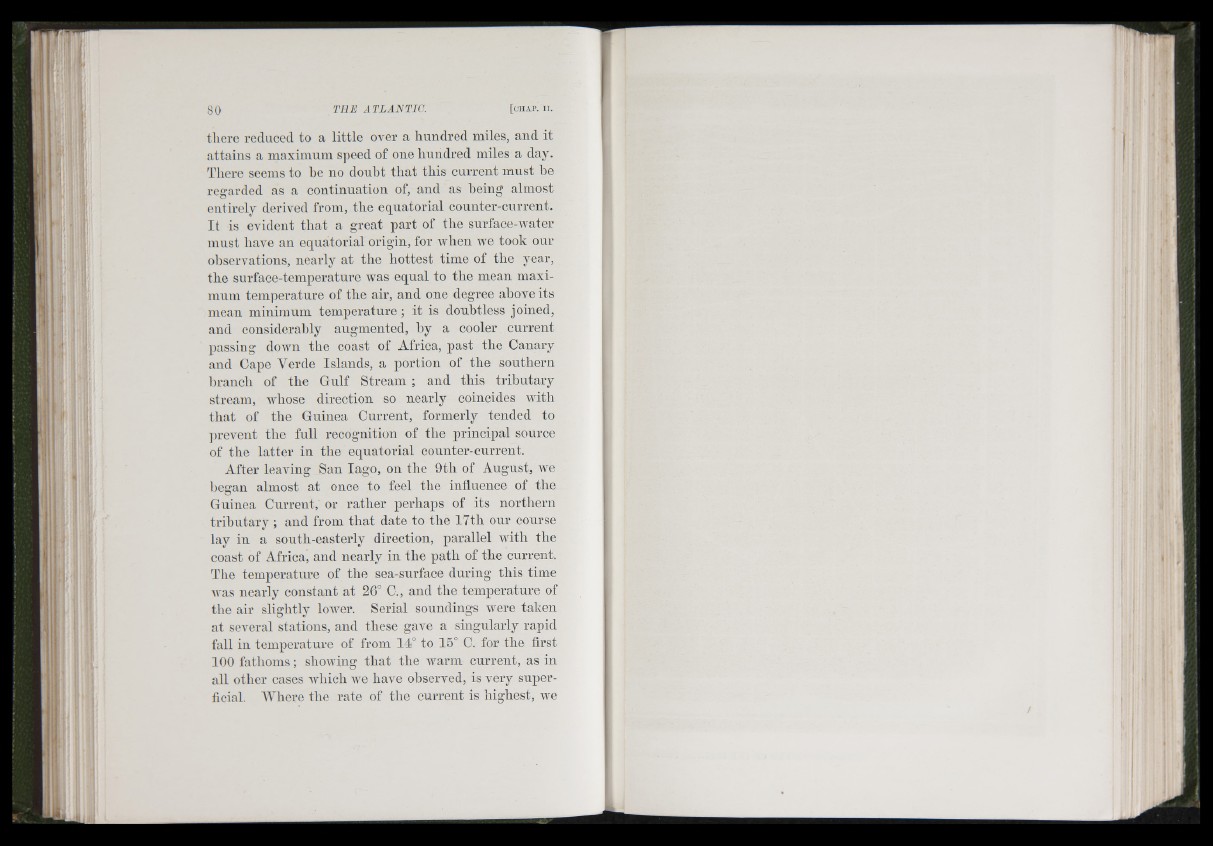
i I-'
ï\
there reduced to a little over a hundred miles, and it
attains a maximum speed of one hundred miles a day.
There seems to be no doubt th a t this current must he
regarded as a continuation of, and as being almost
entirely derived from, the equatorial counter-current.
I t is evident th a t a great pa rt of the surface-water
must have an equatorial origin, for Avhen Ave took our
observations, nearly at the hottest time of the year,
the surface-temperature was equal to the mean maximum
temperature of the air, and one degree ahove its
mean minimum temperature ; it is doubtless joined,
and considerably augmented, by a cooler current
passing doAvn the coast of Africa, past the Canary
and Cape Verde Islands, a portion of the southern
branch of the Culf Stream ; and this trib u tary
stream, AAdiose direction so nearly coincides with
th a t of the Cninea Current, formerly tended to
])revent the full recognition of the principal source
of the la tte r in the equatorial counter-current.
After leaving San lago, on the 9th of August, we
heu’an almost at once to feel the influence of the
Cninea Current, or rath e r perhaps of its northern
trib u ta ry ; and from th a t date to the 17th our course
lay in a south-easterly direction, parallel Avith the
coast of Africa, and nearly in the path of the current.
The temperature of the sea-snrface during this time
Avas nearly constant at 26° 0., and the temperature of
the air slightly loAver. Serial soundings were taken
at several stations, and these gave a singularly rapid
fall in temperature of from 11° to 15° C. for the first
100 fathoms ; shoAving th a t the warm current, as in
all other cases Avhich Ave have observed, is very superficial.
AVhere the rate of the current is highest, we